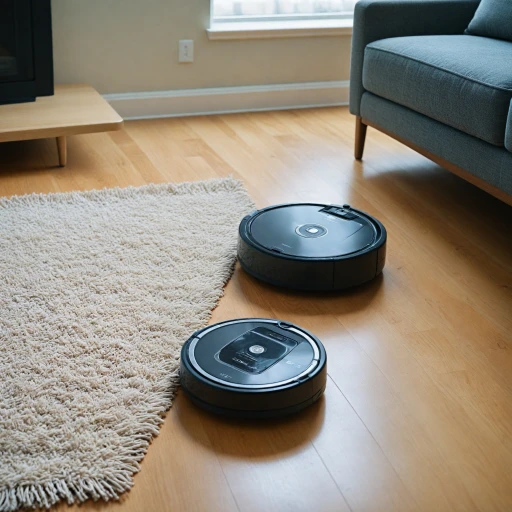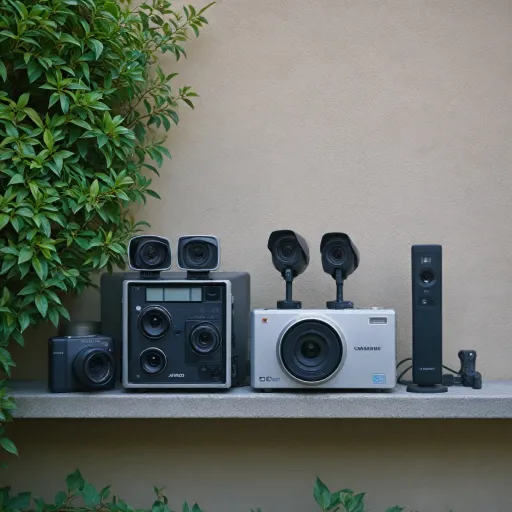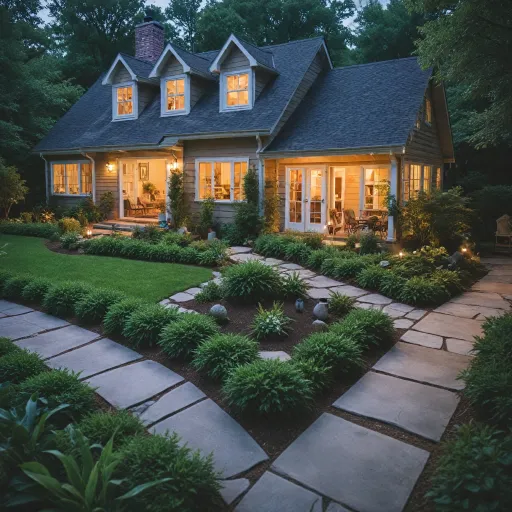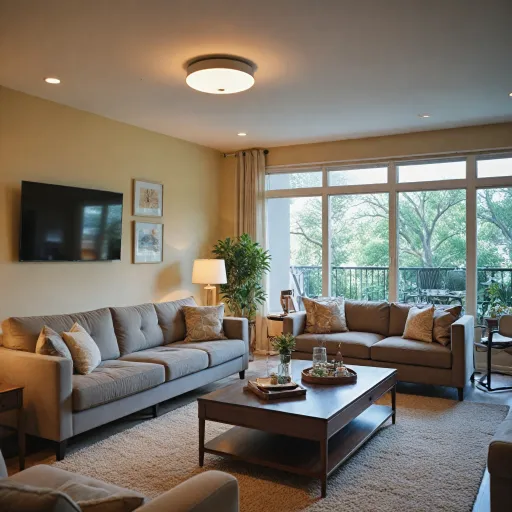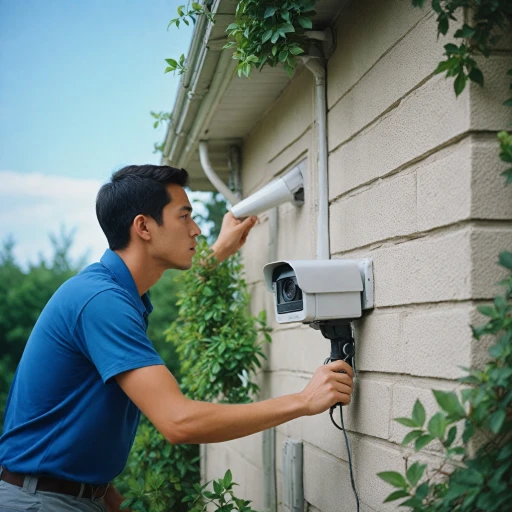
Understanding the dual lens security camera technology
How dual lens technology works in modern security cameras
Dual lens security cameras are changing the way homeowners monitor their property. Unlike traditional single lens cameras, these advanced devices use two separate lenses to capture different perspectives or focal lengths. This means you can get both a wide angle view and a zoomed-in image at the same time, offering more comprehensive coverage. The dual lens setup is especially useful for monitoring large areas, driveways, or entry points, where both a broad overview and detailed close-up are valuable.
Many dual lens cameras combine a standard wide angle lens with a telephoto lens. The wide lens covers a broad field view, while the telephoto lens focuses on distant objects. Some models, like those from Reolink, even support smart motion detection and vehicle detection, which help reduce false alerts. With features like color night vision, these cameras can deliver clear, full-color video even in low light conditions, making them a strong choice for night security.
- Wide field of view: Dual lens cameras often provide a panoramic perspective, minimizing blind spots.
- Enhanced detail: The second lens can zoom in on people or vehicles, capturing important details for identification.
- Smart detection: Many models use AI-powered detection to distinguish between people, vehicles, and other movement.
- Flexible storage: Options like microSD card slots and cloud storage are commonly available, giving you control over your video footage.
When considering a dual lens security camera, it’s important to look at features such as night vision, smart motion alerts, and storage options. The regular price and unit price can vary widely depending on brand and capabilities, with popular choices available on Amazon and other retailers. For a deeper understanding of how these cameras compare to single lens models and what to expect in terms of performance, you can check out this in-depth look at barn owl security cameras.
Key advantages of using dual lens security cameras at home
Enhanced Coverage and Clarity with Dual Lens Cameras
Dual lens security cameras bring a significant upgrade to home protection by offering a wider field of view and improved image clarity. With two lenses working together, these cameras can cover both wide angle and zoomed-in perspectives at the same time. This means you can monitor large areas, like your driveway and front porch, without missing important details. For example, a dual lens camera can capture a broad scene while also focusing on specific motion events, such as a vehicle entering your property.
Superior Night Vision and Color Performance
One of the standout features of dual lens security cameras is their ability to deliver clear video even in low-light conditions. Many models support color night vision, allowing you to see more detail after dark compared to traditional infrared-only cameras. This is especially useful for identifying people, vehicles, or objects at night. Advanced smart motion detection further enhances security by distinguishing between humans, animals, and vehicles, reducing false alerts.
Smart Detection and Flexible Storage Options
Modern dual lens cameras often come equipped with smart security features such as motion detection, vehicle detection, and customizable alert zones. These smart functions help you focus on real threats and avoid unnecessary notifications. In terms of storage, you can usually choose between local options like a microsd card or cloud storage, depending on your needs and budget. Some brands, like Reolink, offer flexible storage and remote access, making it easier to review footage from anywhere.
Cost-Effectiveness and Value
While the regular price or unit price of dual lens cameras can be higher than single lens models, the value they provide in terms of coverage and smart features often justifies the investment. On platforms like Amazon, you can compare different models and prices to find a camera that fits your requirements. The combination of wide field view, smart motion detection, and reliable night vision makes dual lens cameras a strong choice for those seeking enhanced home security.
For more insights on specialized camera types, check out this article on enhancing home security with a bead board camera.
Comparing dual lens cameras to traditional security cameras
How dual lens cameras outperform single lens models
When comparing dual lens security cameras to traditional single lens models, several differences stand out. The most obvious is the ability to capture two perspectives at once. This means you can monitor a wide area with a single device, reducing blind spots and potentially lowering the number of cameras needed for full coverage. For example, a dual lens camera can combine a wide angle lens for general surveillance with a telephoto lens for detailed monitoring of specific zones.
- Field of view: Dual lens cameras often offer a much wider field view compared to single lens options. This is especially useful for monitoring large yards or driveways, where a single angle lens might miss important activity.
- Night vision and color night capability: Many dual lens models feature advanced night vision, including color night vision, which provides clearer and more useful footage in low light. This is a step up from the standard black-and-white night vision found in many traditional cameras.
- Smart motion detection: With two lenses, these cameras can support more accurate motion detection, including features like vehicle detection or smart motion alerts. This reduces false alarms and helps you focus on real threats.
- Video quality and storage: Dual lens cameras often record in higher resolutions, and some models allow you to store footage on a microsd card or use cloud storage for added convenience. This flexibility can be a deciding factor when comparing unit price and long-term value.
- Integration with smart security systems: Many dual lens cameras are designed to work with smart home platforms, offering better support for automation and remote access than older models.
While the regular price of dual lens cameras can be higher than single lens units, the enhanced coverage and features often justify the investment. Brands like Reolink and others on Amazon offer a range of options, so you can find a camera that fits your needs and budget.
For those looking to further enhance their home security setup, combining dual lens cameras with realistic outdoor dummy surveillance cameras can be an effective deterrent, adding another layer of protection without a significant increase in cost.
Important features to look for in a dual lens security camera
Essential Specifications for Dual Lens Security Cameras
When evaluating a dual lens security camera for your home, certain features can make a significant difference in performance and value. The right combination of technology and practical design ensures your security cameras deliver reliable protection, day and night.
- Lens Quality and Focal Length: Dual lens cameras often combine a wide angle lens for broad field view with a telephoto lens for detailed zoom. Check the focal length specifications to ensure you get both wide coverage and the ability to focus on distant objects.
- Night Vision and Color Night Capabilities: Look for cameras offering color night vision, not just standard infrared. This feature helps you see more detail in low light, which is crucial for identifying people or vehicles at night.
- Smart Motion Detection: Advanced motion detection, including vehicle detection and smart motion alerts, can reduce false alarms. Some models use AI to distinguish between people, animals, and vehicles, making notifications more relevant.
- Video Resolution and Field of View: Higher resolution means clearer video. Dual lens security cameras should offer at least 1080p, but 4K is becoming more common. A wide field view ensures fewer blind spots around your property.
- Storage Options: Consider whether the camera supports local storage via microSD card, cloud storage, or both. Flexible storage options let you choose between continuous recording and event-based clips, depending on your needs and budget.
- Power and Connectivity: Some dual lens cameras are powered by batteries, while others require wired power. Check for Wi-Fi support, PoE (Power over Ethernet), or other connectivity options that fit your home setup.
- Smart Home Integration: Compatibility with smart security systems, voice assistants, or mobile apps can make monitoring easier. Look for cameras that support popular platforms for seamless integration.
- Weather Resistance and Build Quality: For outdoor use, ensure the camera is rated for weather resistance (IP65 or higher). Durable construction extends the lifespan of your investment.
- Price and Value: Compare the unit price and regular price across brands like Reolink or those available on Amazon. Balance features with your budget to get the best value for your needs.
- Customer Support and Warranty: Reliable support and a solid warranty can save you headaches if issues arise. Check reviews and manufacturer policies before purchasing.
Choosing a dual lens security camera with these features will help you maximize your home’s protection and ensure you get the most out of your investment.
Installation tips and placement strategies for optimal coverage
Best Practices for Positioning Dual Lens Cameras
To get the most out of your dual lens security camera, placement is key. These cameras are designed to provide a wide field of view and detailed coverage, but their effectiveness depends on where and how you install them. Here are some practical tips:
- Entry Points: Place cameras near main doors, garages, and back entrances. The dual lens setup can capture both wide angle and close-up views, improving detection of people or vehicles.
- Height and Angle: Mount cameras at a height of 8-10 feet. This helps maximize the field view and reduces the risk of tampering. Adjust the angle lens to cover vulnerable areas without obstructions.
- Lighting Conditions: Take advantage of color night vision by avoiding direct exposure to bright lights. Dual lens cameras with smart night vision can deliver clear video even in low light, but positioning matters for optimal results.
- Coverage Overlap: If you use multiple cameras, ensure their views overlap slightly. This prevents blind spots and supports continuous motion detection across your property.
Power and Connectivity Considerations
Reliable power and network connections are essential for smart security cameras. Some dual lens models support Power over Ethernet (PoE), while others rely on Wi-Fi or traditional power adapters. Check the unit price and regular price on platforms like Amazon to compare features such as PoE support, cloud storage, and local storage options like a microsd card.
- Wired vs Wireless: Wired connections offer stable video transmission, but wireless cameras are easier to install in areas without existing wiring.
- Power Backup: Consider backup power solutions to keep your lens security cameras running during outages.
Optimizing Detection and Smart Features
Modern dual lens cameras come with smart motion detection, vehicle detection, and even person detection. To make the most of these features:
- Adjust detection zones to focus on critical areas and reduce false alerts from pets or passing vehicles.
- Test the camera’s motion detection sensitivity and tweak settings for your environment.
- Enable notifications and cloud storage for easy access to important video clips.
Storage and Video Management
Dual lens security cameras often support both local and cloud storage. Local storage, like a microsd card, offers direct access to footage without monthly fees. Cloud storage provides off-site backup and remote access. When comparing cameras, check storage capacity, subscription costs, and compatibility with your smart home system.
Brand-Specific Tips
Brands like Reolink offer dual lens cameras with advanced night vision and wide angle coverage. Before purchasing, review the focal length, field view, and smart motion support. Reading reviews and comparing specs on Amazon can help you find the right balance between price and features for your home security needs.
Common challenges and troubleshooting for dual lens security cameras
Troubleshooting image quality and night vision issues
Dual lens security cameras offer impressive wide angle views and smart color night vision, but users sometimes face image quality problems. If your camera shows blurry or dark footage at night, check if the lens is clean and free from dust. Make sure the night vision mode is enabled and that there are no obstructions blocking the infrared LEDs. For color night vision, adequate ambient lighting is necessary; otherwise, the camera may switch to black-and-white mode. Adjusting the focal length or repositioning the camera can also help improve clarity and field view.
Addressing motion detection and false alerts
Smart motion detection is a key feature in dual lens cameras, but it can sometimes trigger false alerts due to pets, moving branches, or passing vehicles. To reduce unwanted notifications, fine-tune the motion detection sensitivity in the camera settings. Many models, such as those from Reolink or popular Amazon options, offer vehicle detection and customizable detection zones. This helps focus alerts on relevant activity and minimizes unnecessary interruptions.
Power and connectivity concerns
Reliable power and network support are essential for continuous video recording and remote access. If your camera frequently disconnects or loses power, check the power supply and cables for any damage. For wireless cameras, ensure your Wi-Fi signal is strong at the installation point. Wired models may require longer cables or power adapters, especially for outdoor placements. If you experience frequent dropouts, consider relocating your router or using a Wi-Fi extender.
Storage and video playback problems
Dual lens security cameras often support both microsd card and cloud storage. If you can't access recorded footage, verify that your storage device is properly inserted and not full. Some cameras may overwrite old files automatically when storage is full, while others may stop recording. For cloud storage, check your subscription status and internet connection. Regularly backing up important video clips is recommended to avoid data loss.
Firmware updates and technical support
Manufacturers frequently release firmware updates to improve smart security features, enhance motion detection, and fix bugs. If your camera is not performing as expected, check for available updates through the app or official website. For persistent issues, consult the user manual or contact customer support. Brands like Reolink and other reputable security camera companies offer online resources and troubleshooting guides to help resolve common challenges.
- Clean the lens regularly for clear video
- Adjust motion detection zones to reduce false alerts
- Check power and network connections for stability
- Monitor storage capacity and backup important footage
- Stay updated with the latest firmware for optimal performance


